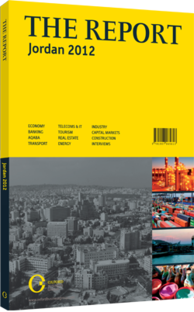
The Report
This article is from the The Guide chapter of The Report: Jordan 2012. Explore other chapters from this report.
As a UNESCO World Heritage Site selected as one of the “new seven wonders of the world” based on a poll organised by the Zurich-based New7Wonders Foundation, Petra is widely regarded as the crown jewel of Jordanian tourism. The historical and cultural importance of the site will be showcased in 2012 when it celebrates the 200th anniversary of its rediscovery.
HISTORY: Petra was established around the sixth century BC by the Nabataeans, a polytheistic group that made the city the capital of its powerful kingdom, which controlled vast tracts of territory in the Middle East. The Nabataeans used Petra – which during its heyday had a population of 30,000 – as a commercial centre for the ancient caravan trade connecting modern-day Gaza in the west, Damascus in the north, the Red Sea in the south, and the Persian Gulf in the south-east. Using the wealth obtained from this trade, the Nabataeans created complex water management systems throughout the area, as well as sacrificial altars, burial chambers and tombs. They also constructed the awe-inspiring “Treasury”, an elaborately designed rock-hewn temple in the heart of the city standing some 40 metres high.
HIGHS AND LOWS: Petra was conquered by the Romans in 106 AD and absorbed into their empire. As the caravan business diminished due to the emergence of sea-based trade routes in the region, Petra gradually declined in importance as well. In the year 363 AD, the area was struck by a massive earthquake that pushed the city further into decline.
Although never completely abandoned, Petra was nearly forgotten by the Western world until, in 1812, the ancient city was “rediscovered” by Swiss explorer Johann Ludwig Burkhardt. In the two centuries that followed, the site became increasingly well-known to archaeologists, adventurers and even filmmakers. Petra was depicted in several scenes in the 1989 blockbuster Indiana Jones and the Last Crusade.
Petra is now Jordan’s most popular tourism destination and a key source of national wealth generation. According to the Petra Development and Tourism Regional Authority, in 2010 the city attracted 962,784 visitors, more than double the number that visited Jerash (412,649) and Madaba (399,057). As a result, revenue collected in the city in 2010 rose 31% to JD17.7m ($2.49m) – an all time high.
Yet due to regional unrest, which has caused a marked drop in tourism sector revenue in Jordan (and, indeed, much of the Middle East), Petra is now facing a decline. In 2011 visitors to the site fell 35% and revenue generated by the city dropped to JD10.4m ($14.6m). This trend continued into the beginning of 2012, with visitor numbers falling 26.8% year-on-year in the first two months of the year.
200TH ANNIVERSARY: Despite this downward trend, stakeholders at Petra are optimistic that numbers will pick up later in 2012 and into 2013, due in large part to increased marketing efforts led by private businesses and tourism officials, in conjunction with the 200th anniversary of the city’s rediscovery. Numerous anniversary events are planned at the site over the course of the year to draw visitors, and local hotels and travel agencies have also launched special itineraries and anniversary package deals. Moreover, as major tourism development projects in nearby areas such as Wadi Rum, Aqaba and the Dead Sea are completed in 2012 and beyond, more visitors are likely to travel to the country overall, with trickle-down effects expected to boost growth at Petra.
Petra should also benefit from the increased focus on site conservation. Although Petra was listed as an endangered site by World Monuments Watch as recently as 2002, many conservationists have acknowledged that preservation efforts have improved considerably since the city was named one of the new seven wonders of world in 2007. This is good news for the country’s economy, which is dependent on sustainable tourism growth, and for people around the world, who can rest assured that one of mankind’s cultural and historic treasures is being well preserved.
You have reached the limit of premium articles you can view for free.
Choose from the options below to purchase print or digital editions of our Reports. You can also purchase a website subscription giving you unlimited access to all of our Reports online for 12 months.
If you have already purchased this Report or have a website subscription, please login to continue.
| Chapter overview View the The Guide chapter overview, from The Report: Jordan 2012 | Next chapter from this report Table of Contents, from The Report: Jordan 2012 |

This article is from the The Guide chapter of The Report: Jordan 2012. Explore other chapters from this report.
Explore any of the chapters below to select an article.
Stay updated on how some of the world’s most promising markets are being affected by the Covid-19 pandemic, and what actions governments and private businesses are taking to mitigate challenges and ensure their long-term growth story continues.
Register now and also receive a complimentary 2-month licence to the OBG Research Terminal.
Register Here×